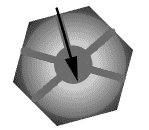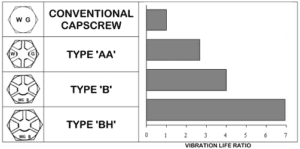Asymmetric Place bolts work based on two design features that complement each other. But before we get to the specifics, let’s take a moment and introduce Place bolts. An asymmetric Place bolt is a special type of bolt that is designed to be self-locking and resist loosening due to vibration. The self-locking action is achieved by a unique head design that features five slots and an undercut which work together to create a diaphragm-like locking action. You can find asymmetric Place bolts in use anywhere vibration is a factor, including flywheels, cylinder heads, compressor heads, or mud pumps on oil rigs. Read on for a discussion of the different types of Place bolts and a primer on how they work.
Three Types of Place Bolts
‘AA’ Place Bolts – the Original
The Place bolt was invented by Charles Place in the mid-1950s. The original design featured a symmetrical six-slot head along with an undercut. Place’s new bolt design offered superior locking action as well as weight reduction over traditional hex head cap screws. The ‘AA’ Place bolt, as it was known, was quickly adapted for automotive and military applications. This design is still in use today, although, as you will see, more effective options are now available.
 ‘B’ Place Bolts – an Asymmetric Improvement
‘B’ Place Bolts – an Asymmetric Improvement
In the late 1960s, Wilson-Garner Company developed and received a patent for a better-performing version of the Place bolt, the ‘B’ Place bolt. This design featured a five-slot asymmetrical head. This new head design had the effect of moving the center of mass away from the center-line of the bolt. This improvement, coupled with the original undercut design, provided superior locking action over the original ‘AA’ design.
 ‘BH’ Place Bolts – Bigger Head, Better Locking
‘BH’ Place Bolts – Bigger Head, Better Locking
Developed and patented at the same time as ‘B’ Place bolts, ‘BH’ Place bolts feature the same asymmetric 5 slot head and undercut as their ‘B’ brethren. However, ‘BH’ Place bolts have an oversize head, which allows for even more locking action. In fact, ‘BH’ Place bolts resist loosening up to seven times better than regular hex head cap screws.
RELATED: Need a specialty bolt, screw, or stud? Wilson-Garner can help.
How Asymmetric Place Bolts Work
Asymmetric Place bolts derive their locking action from two factors built into the head design: Asymmetric form and elastic diaphragm action.
Asymmetric Head and Center of Mass
The 5 slot head of the ‘B’ and ‘BH’ Place bolts is designed to move the center of mass away from the center line of the bolt.
The slight difference in the amount of material on one side of the head may not seem like much, but it is enough to move the center of mass to the side. Moving the center of mass off the center line helps the bolt to resist turning and loosening over time. ‘BH’ bolts have more material in the head, thus moving the center of mass even farther from the center axis.
Elastic Diaphragm Action
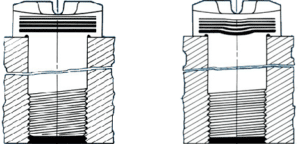
If you tighten a bolt enough, the steel starts to stretch. A bolt tightened with the correct amount of torque will stretch and try to spring back to its original shape. This has the effect of tightening the joint. The slotted head coupled with the undercut of a Place bolt allows this stretching action to lock down the head.
On the left, we have a Place bolt that has been loosely threaded into a fitting but not tightened. The Place bolt on the right has been tightened. As you can see, the tightening of the bolt has caused the steel to stretch. As the bolt tries to pull back to its original form, it creates a diaphragm locking action that prevents the part from rotating and loosening.
How Effective are Place Bolts?
For a demonstration on how effective Place bolts are, we ran a comparison of all three Place bolt styles versus a regular hex head cap screw. The results are shown in the chart below and demonstrate that Place bolts do exactly what they are designed to do: resist loosening due to vibration.
As always, thanks for reading. For more information and a bit more technical detail, check out the article we wrote for American Fastener Journal. For any specific questions, feel free to contact us.
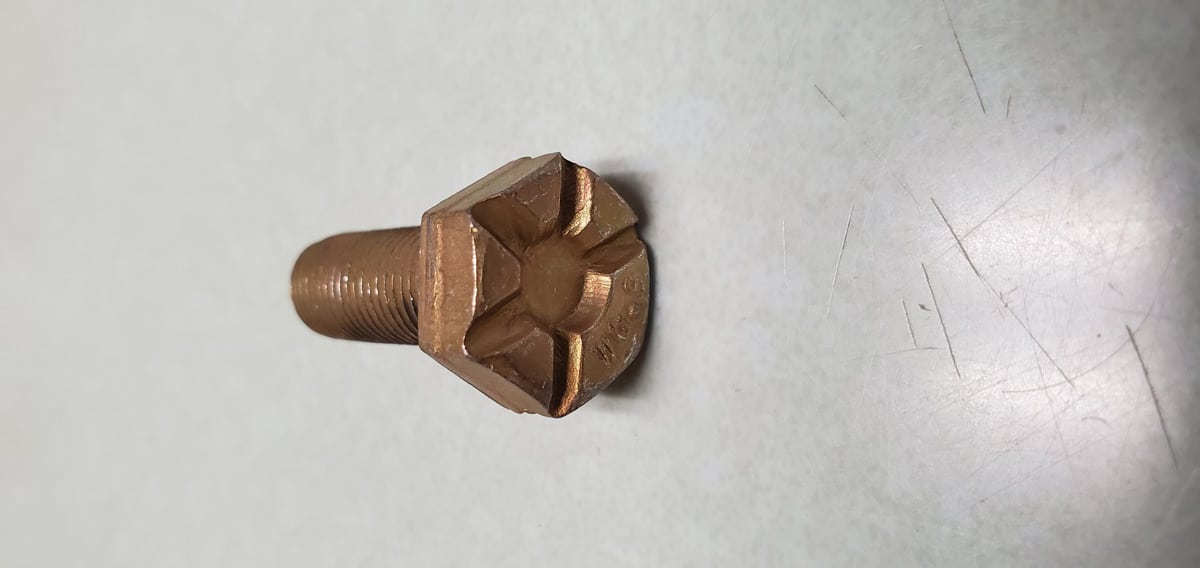
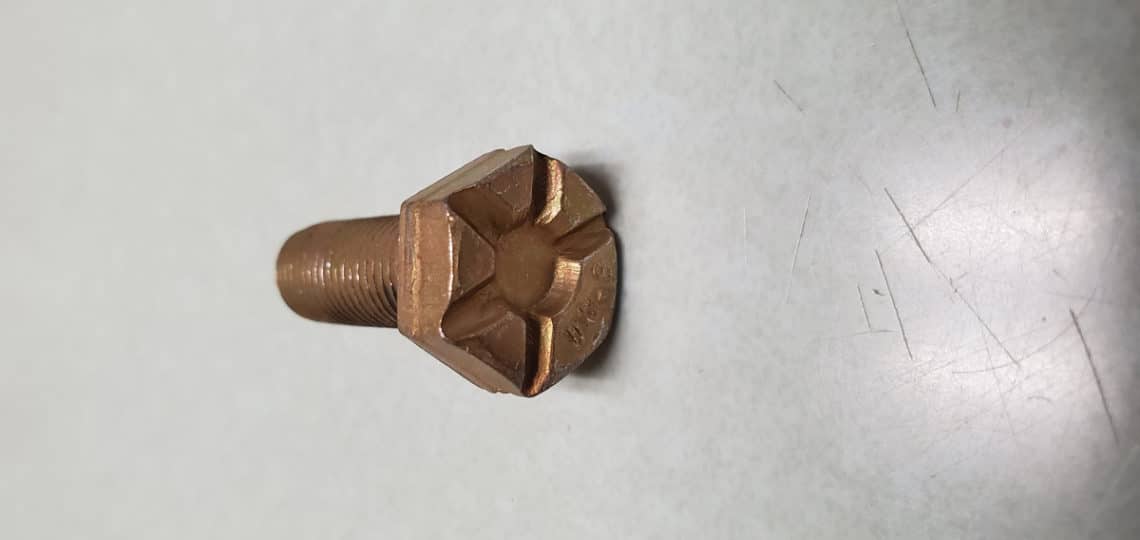
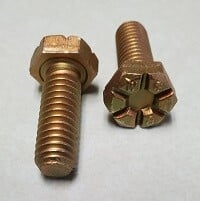
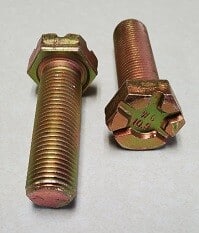 ‘B’ Place Bolts – an Asymmetric Improvement
‘B’ Place Bolts – an Asymmetric Improvement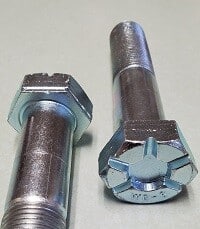 ‘BH’ Place Bolts – Bigger Head, Better Locking
‘BH’ Place Bolts – Bigger Head, Better Locking